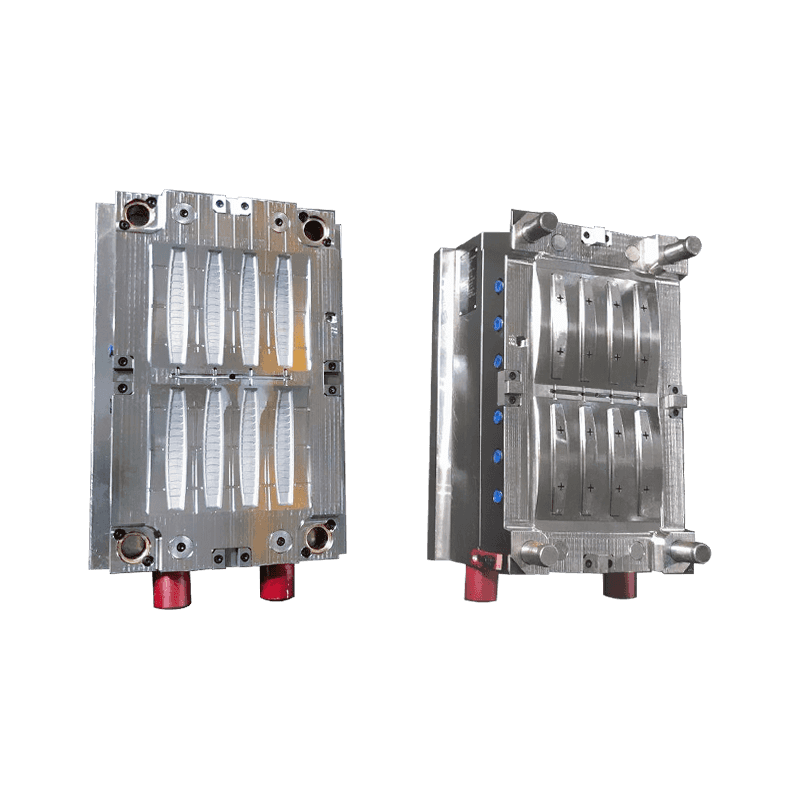We are committed to providing customers with high-quality, precision mold solutions.
Toolbox Molds
Cat:Toolbox And Accessories Mold
Toolbox molds encompass a variety of types designed to produce different styles and sizes of toolbox...
See Details
In the realm of industrial production, precision and efficiency are paramount. One often overlooked yet critical component in this process is the toolbox handle trim mold. These specialized molds are integral to the manufacturing of toolbox handles, which are essential for a wide range of industries, from automotive to construction.
The Importance of Toolbox Handle Trim Molds
Toolbox handle trim molds are designed to provide a precise and consistent shape to the handles of toolboxes. The significance of these molds lies in their ability to:
1. Ensure Consistency: By using trim molds, manufacturers can guarantee that each handle produced will have the exact same dimensions and shape, which is crucial for a uniform product line.
2. Improve Product Quality: The molds help in trimming excess material and refining the edges of the handles, resulting in a smoother, more refined finish that is comfortable to use and aesthetically pleasing.
3. Enhance Production Speed: With the use of these molds, the production process becomes more streamlined, allowing for faster production times and increased output.
4. Reduce Material Waste: By providing a precise cut, trim molds material waste, contributing to cost savings and environmental sustainability.
5. Customization: Toolbox handle trim molds can be customized to meet specific design requirements, allowing for a wide range of handle styles and sizes to be produced.
Applications of Toolbox Handle Trim Molds
The applications of toolbox handle trim molds extend across various industries where durability and functionality are required:
- Automotive Industry: For tool storage and organization in maintenance and repair tasks.
- Construction Sector: To carry tools and equipment on construction sites.
- Agriculture: For the storage and transport of gardening and farming tools.
- DIY and Home Improvement: For hobbyists and homeowners who require portable storage for their tools.
Understanding the Characteristics of Die Casting Injection Molding
Introduction
Die casting injection molding is a process that has revolutionized the manufacturing industry, offering a high-speed method for producing intricate metal components with exceptional precision. This process has several distinct characteristics that set it apart from other manufacturing techniques.
What is Die Casting Injection Molding?
Die casting injection molding involves the use of a die (mold) into which molten metal is injected under high pressure. The metal cools and solidifies in the mold, taking the shape of the cavity. Once cooled, the die opens, and the finished part is ejected.
Key Characteristics of Die Casting Injection Molding
1. High Precision: The process allows for the production of parts with tight tolerances and complex geometries, making it ideal for intricate designs.
2. Speed: Die casting is one of the fastest methods for producing metal parts, which is beneficial for mass production.
3. Material Efficiency: The process uses less material than other casting methods, reducing waste and cost.
4. Surface Finish: Die casting can produce parts with a smooth surface finish, often eliminating the need for secondary finishing processes.
5. Strength and Durability: The metal parts produced through die casting are known for their strength and durability, making them suitable for high-stress applications.
6. Wide Material Range: Die casting can be used with a variety of metals, including aluminum, magnesium, and zinc.
7. Cost-Effectiveness: The process is cost-effective for high-volume production due to its speed and material efficiency.
8. Environmental Considerations: Modern die casting facilities are designed with energy efficiency and minimal environmental impact in mind.
Contact Us